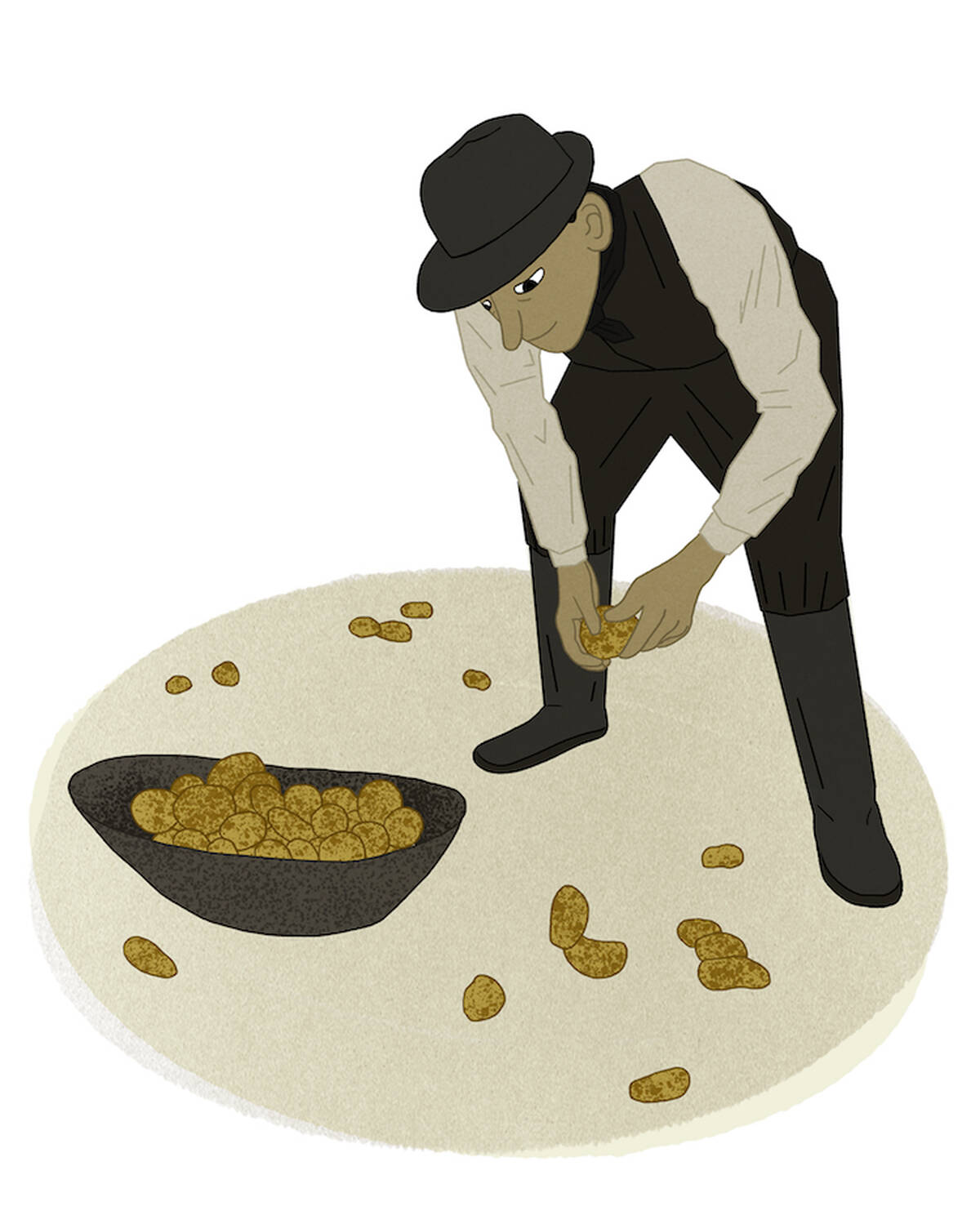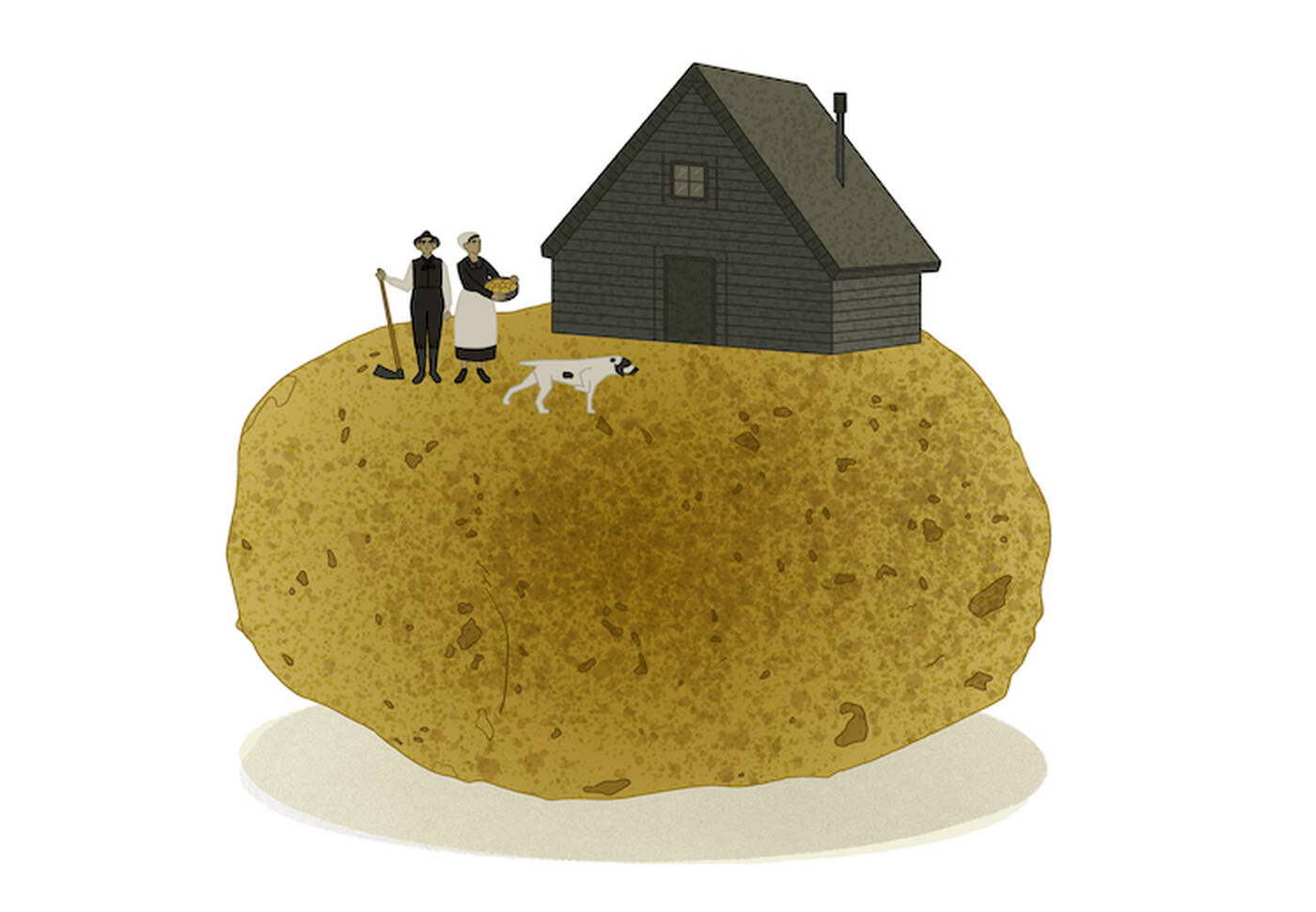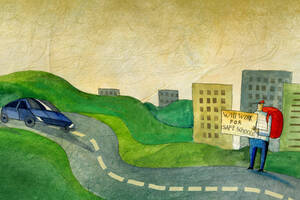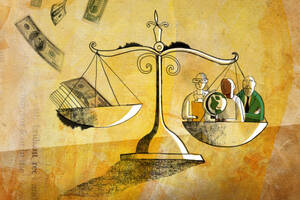Economics Social Impact May 2, 2018
How the Potato Ushered in an Era of Peace
Its arrival in Europe had consequences that went far beyond diet.

Lisa Röper
The potato, small and humble though it may be, has played an outsized role in history.
Many scholars credit the hardy and nutrient-rich crop with rapid population growth across Europe; the tuber has been linked to the rise of industrialization and empire in the West, and in the mid-19th century, the collapse of Ireland’s potato crop drove a wave of immigration to the United States, forever changing the young country.
Now, the potato can add a new line to its already fascinating resume: peacemaker.
Research from Nancy Qian, a professor of managerial economics and decision sciences at the Kellogg School, finds that potatoes, and the permanent boost in agricultural productivity they brought about, reduced global armed conflict in the 18th and 19th centuries.
Potatoes became cultivated as a crop in Europe around 1700, at which point the regions that could grow potatoes “experienced a sharp decline in conflict that lasted for the next 200 years,” Qian says.
Qian and her coauthors examined armed conflict in Europe, North Africa, and the Middle East between 1400 and 1900—a notoriously bloody and brutal period. “Everyone was fighting everyone, all the time,” she says.
But things changed when Spanish explorers brought back the potato from South America in the 16th century, her study shows. Suddenly, a family of four could grow enough food to survive on about a third as much land as they needed before. In fact, a diet of only potatoes, supplemented by dairy, provides all the vitamins humans need.
“These historical jumps in agricultural productivity alter the landscape of human civilization in important and fundamental ways we haven’t really talked about.”
This abrupt change in the food supply was enough to prompt battle-hardened Europeans to put down their weapons.
Qian can’t say for sure exactly why people swapped the sword for the spud, but she has a strong suspicion.
“Historically, agricultural land was the most valuable resource,” she explains. “If the land is able to produce more food per area, then it becomes cheaper—and if it’s cheaper, then it’s less valuable, and people don’t want to fight over it as much.”
She thinks it’s also possible farmers found the prospect of going to battle less enticing when they had a successful harvest to manage at home. But whatever the mechanism, it is clear that potatoes ushered in a more peaceful era.
Spuds and Stats
In a 2011 paper, Qian and coauthor Nathan Nunn at Harvard found that potatoes were responsible for a significant portion of the increase in population and urbanization that took place in the West in the 18th and 19th centuries.
She began to wonder what else might have changed after potatoes arrived in the Old World, figuring “if you’ve got all this food, that’s got to be good for other stuff,” she says.
So Qian and Nunn teamed up with Murat Iyigun at the University of Colorado to investigate the relationship between potatoes and conflict. They decided to focus on specific battles instead of wars, for a variety of reasons: it is not always clear from the historical record when a particular war began or ended, and in some cases, it can be challenging to decide to which wars battles belonged.

To do this they needed to assemble a comprehensive, five-century database of armed conflict in Europe, North Africa, and the Middle East—a task the researchers thought might take six months. The team laboriously digitized data from several battle encyclopedias compiled by historians. It took six years.
They created a dataset of all European battles from 1400 onward in which 32 or more combat fatalities occurred. The dataset includes the name, time, and location of each skirmish, and information about the parties involved in it. This information allowed them to plot each battle on a map.
Then, they divided that map into 400 km by 400 km squares (each about a third the size of modern-day France), noting which squares were suitable for growing potatoes and which were not.
Did grids with climates suitable for growing potatoes see a decrease in conflict after 1700, as compared to grids with climates unsuitable for growing potatoes?
Indeed they did, the researchers discovered. “If you can cultivate potatoes, then after they become available, you experience a decline in conflict, relative to grids that cannot cultivate potatoes,” Qian explains. In fact, 26 percent of the variation in conflict is explained by the variation in potato cultivation.
But a question sprouted up: How could the researchers be sure that potatoes were actually reducing conflict, as opposed to exporting conflict elsewhere? In other words, perhaps potato-rich regions were not fighting at home, as they once did, but were instead picking fights in areas that could not produce potatoes.
To rule out this possibility, the researchers excluded from their analysis any battles in which the two actors were located very far from each other. In the end, even when they limited their analysis to local and civil conflict, the results held true.
This abrupt change in the food supply was enough to prompt battle-hardened Europeans to put down their weapons.
They also wanted to make sure that potato-friendly regions did not have other unrelated advantages that might have brought about a decrease in conflict. So they controlled for a variety of potentially confounding factors, including weather shocks such as sudden increases or decreases in rainfall; geographic characteristics such as elevation and ruggedness; and suitability to grow other staple crops introduced from the Columbian exchange, such as maize and sweet potatoes.
This allowed them to confirm that it was potatoes, and only potatoes, that were responsible for the change.
How Potatoes Changed History
Until recently, Qian says, historians and economists did not have much evidence of how increasing agricultural productivity shaped the world over the long run—something she felt was an oversight. For most of human history, land was the most important resource, and cultivating crops was a life-and-death affair. But after 1700, the food supply was suddenly more abundant and stable than it had ever been.
That shift, her research shows, brought about other monumental changes: The global population increased. Cities grew. Conflict lessened.
“These historical jumps in agricultural productivity alter the landscape of human civilization in important and fundamental ways we haven’t really talked about,” Qian says.
Although her research shows potatoes were a boon for the world, there is one important place where they have not reduced conflict: Qian’s own kitchen. Despite having written two research papers about them, she admits she does not particularly like potatoes. Her husband, whose native Belarus has the highest per-capita potato consumption of any country in the world, loves them.
“He’s always trying to get me to cook more potatoes,” she says. “And he tries to use these papers against me: ‘You show they’re really good for everything, so we should cook more potatoes.’”


